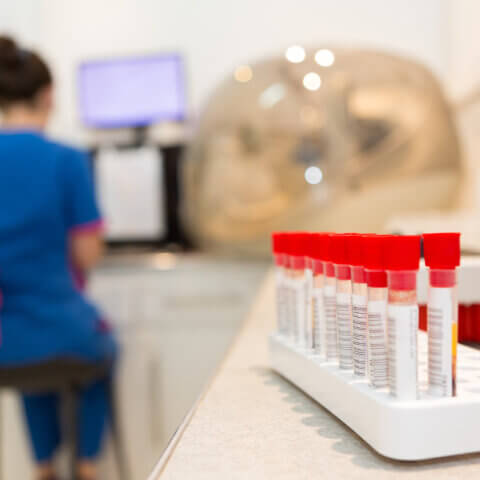Medical devices are ubiquitous — from thermometers, bandages, and dental floss to blood glucose meters, hearing aids, and complex implantable devices such as pacemakers. The latest cutting-edge examples even extend to apps on tablets and PCs that physicians use to help monitor and treat patients. Before a medical device can be put on the market, the manufacturer must present evidence that the device is reasonably safe and effective for a particular use.
The scope of this evidence will differ depending on the risk class in which a device is placed. For higher-risk devices, clinical investigations and continuous assessment of post-marketing performance may be required. Although the concept is similar to the one implemented for medicinal products, the regulatory requirements for devices are distinct from those governing drugs, particularly in the area of safety.
The Risk-Based Regulatory Framework for Medical Devices in the U.S.
Federal law (Federal Food, Drug, and Cosmetic Act, section 513), established the risk-based device classification system for medical devices necessary to provide reasonable assurance of its safety and effectiveness.1
Low-risk devices — such as prescription eyeglasses, which present minimal potential for harm to the user and which most consumers can use without instruction — are generally exempt from FDA review, but manufacturers remain subject to certain safety requirements. Manufacturers of moderate-risk devices, such as blood glucose meters, are typically required to demonstrate that their device is substantially equivalent to another device that is already on the market. In the majority of cases, this can be achieved without clinical data.2
However, for higher-risk and innovative moderate-risk devices, the FDA usually requires manufacturers to provide clinical evidence that the benefits of the device outweigh its risks by conducting clinical trials.
During the trial, a sponsor must report the results of an evaluation of an unanticipated adverse device effect to the FDA and all reviewing IRBs and investigators within specified timelines.3 Often, this clinical evidence is critical not only for demonstrating the safety and efficacy of the device but also for supporting the proper or preferred use of the device in the marketed clinical setting.
Increased Rigor for Medical Device Safety Evaluation in the EU
In May 2017, the European Commission adopted new regulations to reflect the substantial technological and scientific progress that has been made in the medical device sector since the 1990s when the first harmonized EU directives were introduced. The two new regulations – the Medical Devices Regulation (MDR) and the In-Vitro Diagnostics Regulation (IVDR) – replaced the three directives, becoming effective (with some exceptions) in May 2021 and May 2022 respectively.4,5,6,7,8 and significantly unified regulatory requirements for these products entering into force in the whole EU without the need to implementation to Member States’ law.
Under the new regulations, more emphasis is on the safety and performance evaluation, benefit-risk determination, and risk management of the product. They aim to improve patient safety by introducing more stringent procedures for conformity assessment and post-market surveillance.
Regulations unified across the whole EU, and significantly strengthened the standards which the Notified Bodies, organizations that perform conformity assessments of medium- and high-risk devices before they are placed on the market, have to meet.
They increased obligations for manufacturers who have to set up quality management and post-market surveillance systems appropriate for the type and risk class of the devices.4
Devices are not medicinal products — Safety Reporting Requirements in the EU
Although certain aspects of new device regulations especially concerning conducting clinical investigations on medical devices almost mirror such regulations for medicinal products, there are also significant differences in the safety reporting requirements in clinical trials for devices than in those for drugs.
The main difference is that for medicinal products, only suspected unexpected serious adverse reactions (SUSARs) are reportable. Based on the MDR and IVDR, manufacturers are required to report all serious adverse events that are considered related to the device or the procedure in which the device is used, no matter whether these events are expected/anticipated or not. Moreover, timelines for the reporting are stricter than in drug studies giving the sponsor only seven calendar days for reporting in the majority of cases.
Another difference from drug clinical trials is the necessity to report device deficiencies, which might have led to SAE if a suitable preventive action had not been taken.4 Device deficiencies are inadequacies of a medical device related to its identity, quality, durability, reliability, safety, or performance. Additional vigilance and appropriate means are required to notice, properly analyze, and report such events.
These requirements apply not just to implantable devices, but to all types of devices, including in vitro devices and diagnostics which are not used directly by the patient. For all these types of devices, sponsors have to establish a proper system of collecting, analyzing, and reporting SAEs.
Navigating the Regulatory Requirement for Medical Devices
Practical limitations related to the device or disease condition often make it difficult, or even unethical, to conduct large, double-blind, randomized medical device trials. As a result, device manufacturers may need to develop alternative, more flexible approaches to clinical trial design and statistical analysis. In some cases, manufacturers may want to consider leveraging alternative data sources, such as patient registries or mathematical modeling techniques, for device validation.
Given the complexity of the regulatory environment, manufacturers may benefit from working with a contract research organization that has deep experience in medical device trials and from working with regulatory authorities to develop a study design and statistical analysis approach that is feasible, tailored to the technology and indication, and created with patient safety in mind.
To learn more about how Premier Research can support your end-to-end product development needs, contact us.
[1] U.S. Food and Drug Administration. Regulatory controls. Retrieved March 2024 from: https://www.fda.gov/medical-devices/overview-device-regulation/regulatory-controls.
[2] U.S. Food and Drug Administration. The 510(k) Program: Evaluating Substantial Equivalence in Premarket Notifications [510(k)] — Guidance for Industry and Food and Drug Administration Staff. Retrieved March 2024 from: https://www.fda.gov/regulatory-information/search-fda-guidance-documents/510k-program-evaluating-substantial-equivalence-premarket-notifications-510k.
[3] U.S. Food and Drug Administration. Title 21, Code of Federal Regulations, Section 812.150. Retrieved March 2024 from: https://www.accessdata.fda.gov/scripts/cdrh/cfdocs/cfcfr/cfrsearch.cfm?fr=812.150.
[4] European Parliament, & Council of the European Union. Regulation (EU) 2017/745 of the European Parliament and of the Council of 5 April 2017 on medical devices, amending Directive 2001/83/EC. Retrieved March 2024 from: https://eur-lex.europa.eu/legal-content/EN/TXT/PDF/?uri=CELEX:32017R0745.
[5] European Parliament, & Council of the European Union. Regulation (EC) No 178/2002. Retrieved March 2024 from: https://eur-lex.europa.eu/legal-content/EN/ALL/?uri=CELEX%3A32002R0178.
[6] European Parliament, & Council of the European Union. Regulation (EC) No 1223/2009. Retrieved March 2024 from: https://health.ec.europa.eu/system/files/2016-11/cosmetic_1223_2009_regulation_en_0.pdf.
[7] European Parliament, & Council of the European Union. Repealing Council Directives 90/385/EEC and 93/42/EEC. Retrieved March 2024 from: https://www.medical-device-regulation.eu/download-mdr/.
[8] European Parliament, & Council of the European Union. (2024). Regulation (EU) 2017/746 of the European Parliament and of the Council of 5 April 2017 on in vitro diagnostic medical devices and repealing Directive 98/79/EC and Commission Decision 2010/227/EU. Retrieved from https://eur-lex.europa.eu/legal-content/EN/TXT/PDF/?uri=CELEX:32017R0746.




